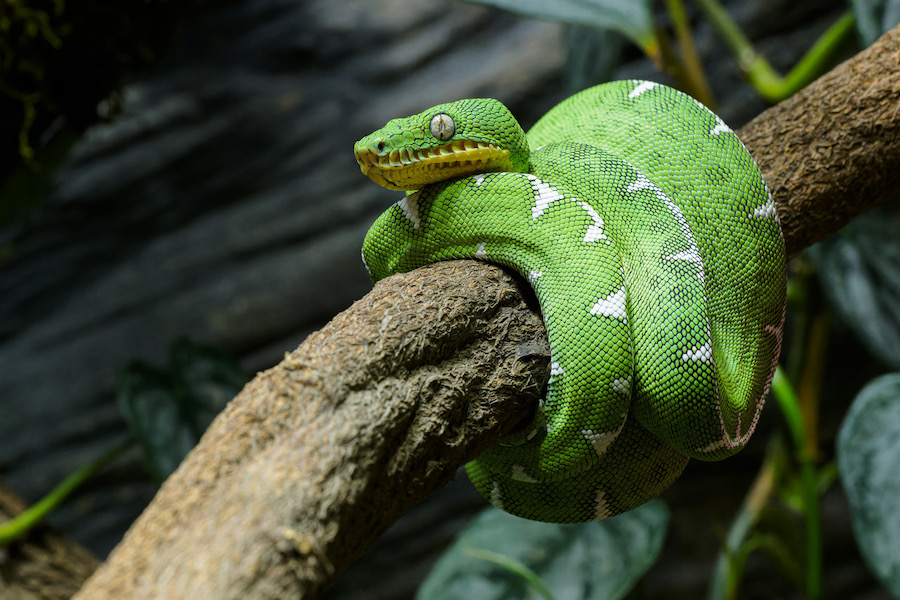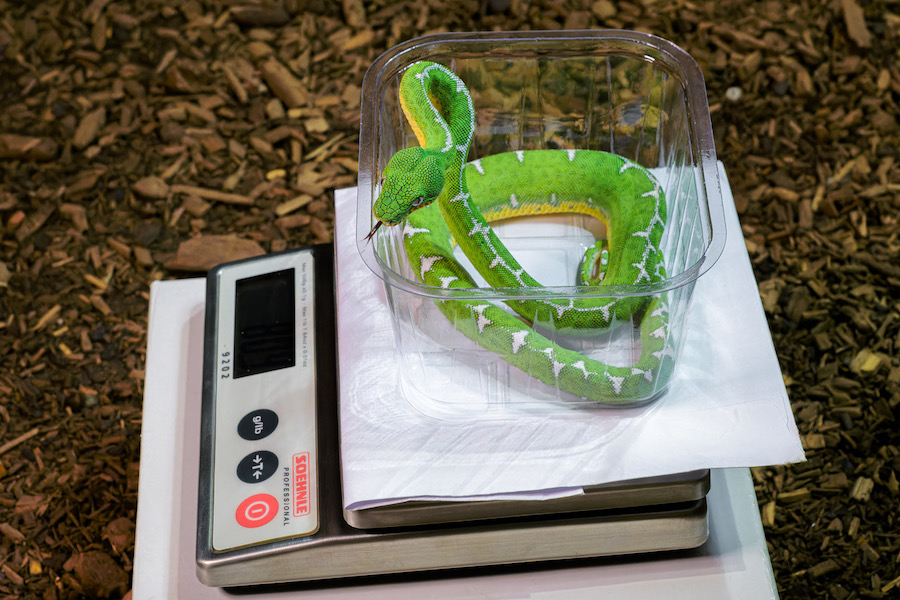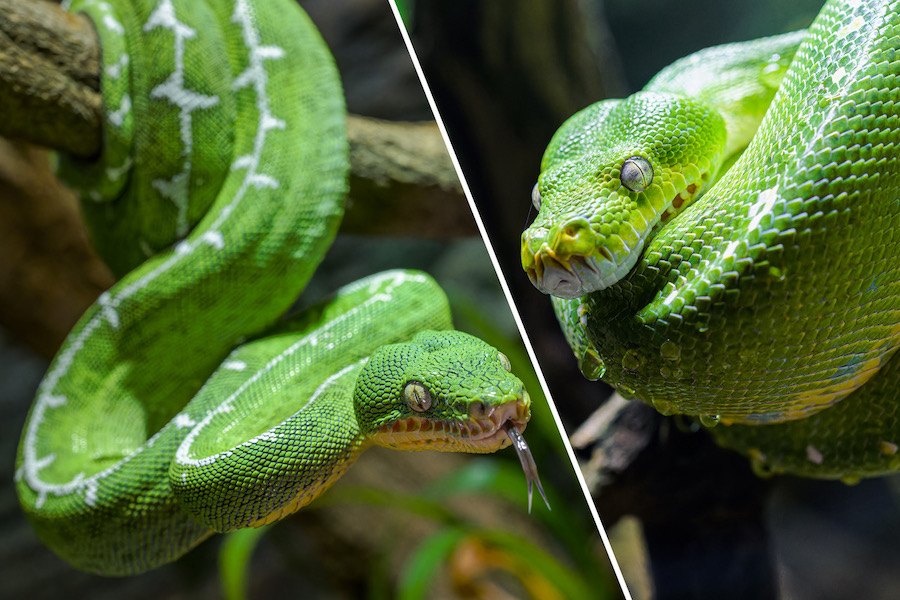
Bates’s snakehead is a new addition to the Prague Zoo’s snake collection. There is only a very limited number of individuals in European breeding and at the same time many people interested in its breeding. Getting a young couple is all the more valuable. Photo by Petr Hamerník, Prague Zoo
In the Prague Zoo, the rarely bred Bates dogs can now be seen. These snakes, emerald green on top and lemon yellow on the bottom, inhabited the Terrarium pavilion.
A delicate species native to the Amazonian lowlands, it boasts the proportionally longest teeth among non-venomous snakes. His likeness with the inhabitant of the neighboring exhibit, an unrelated green python that comes from the opposite end of the world, is also fascinating. At the Prague Zoo, visitors can now see this phenomenon – the so-called convergent evolution – with their own eyes.
“The male is called Uatuma and the female is called Coari. It is a young couple, whose acquisition from an experienced herpetologist is extremely valuable for us,” says reptile breeder Vojtěch Víta. “We planted the terrarium exclusively with such types of plants that are also found in the natural habitats of these canids in the Amazon. It is an arboreal species of snake, so visitors will definitely find our pair in the branches at the top of the exhibit.”

When moving from the background of the zoo to the pavilion, it was appropriate to measure and weigh the dogs. It is advisable to limit the handling of such conservative species of snakes to a minimum, therefore every suitable situation should be used for the control inspection. Photo by Petr Hamerník, Prague Zoo
They got their bizarre name from the famous Swedish naturalist Carl Linnaeus, the creator of traditional botanical and zoological nomenclature. Based on the shape of the head and fangs, which resemble those of a dog, he called the first described canine with the species name caninus (= canine), which later became the Czech generic name.
The species name “Bates” was given to this attractive species in honor of the British biologist Henry W. Bates, who was the first to draw attention to the mimicry of non-poisonous animals that resemble poisonous species in their appearance in order to deter enemies. Even the Bates’ sardine is a good example of this. In its appearance, it imitates the poisonous bush beetle Bothrops bilineatus.
Probably the most remarkable fact that visitors will notice when walking through the Terrarium in the lower part of the zoo is the already mentioned figure with a green python in the neighboring terrarium. Although dog-heads inhabit South America and the latter in northern Australia and New Guinea, to the layman’s eyes they are indistinguishable.

The figure with the green python (right) is remarkable. Not only the appearance or the environment they inhabit are similar, but also the way of life and even the typical elliptical resting position. Photo by Petr Hamerník, Prague Zoo
“The two species are separated by 70 million years of separate evolution, yet they are similar not only in appearance but also in their way of life. Adaptation to almost the same environment or food caused an almost identical development. We call this phenomenon convergent evolution, and it can be seen to varying degrees in other animals as well: for example, in armadillos and crustaceans or our hedgehogs and Australian sea urchins,” explains Víta.
While the green python is a relatively commonly bred species in zoos and hobby farms, Bates’s pythons are now exhibited by only three other institutions in the entire EU, besides the Prague Zoo.

